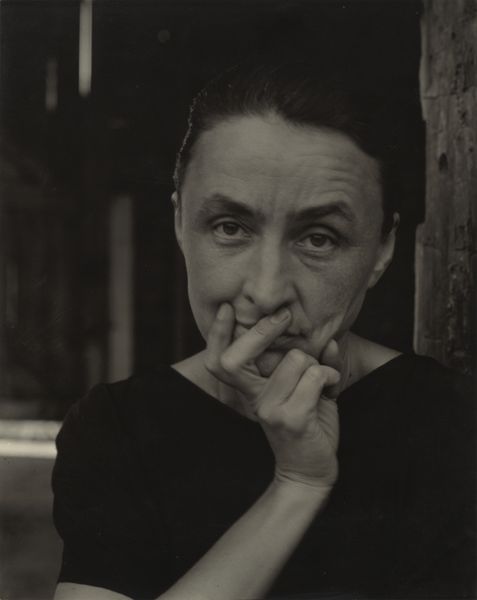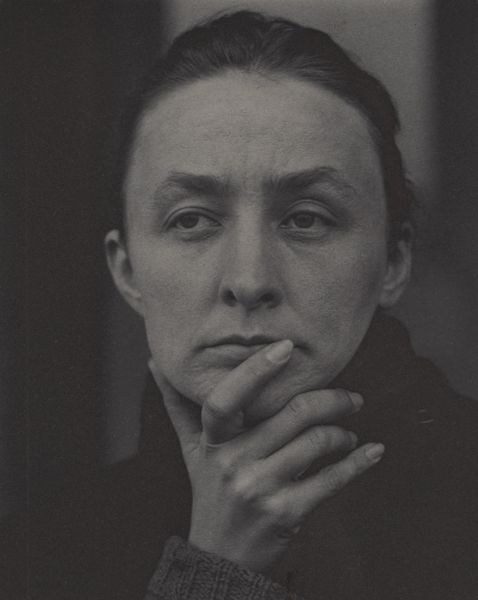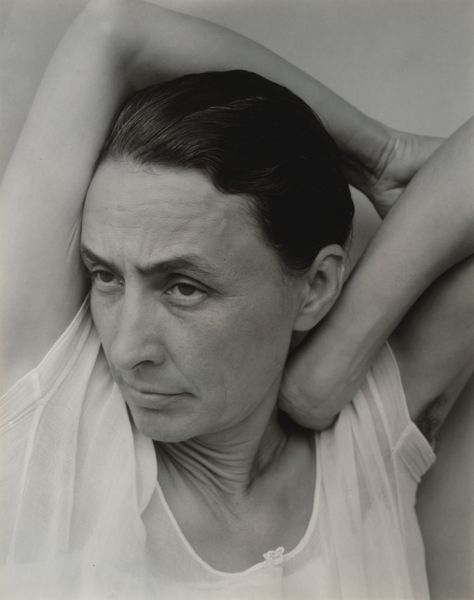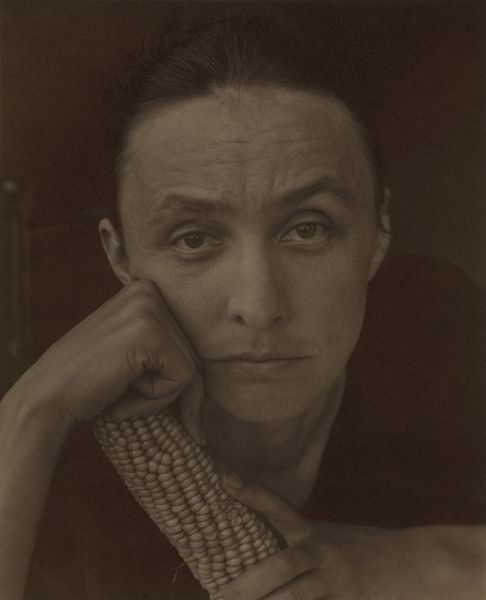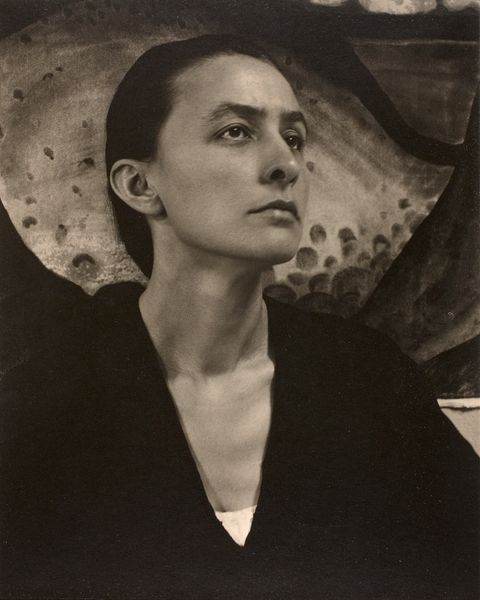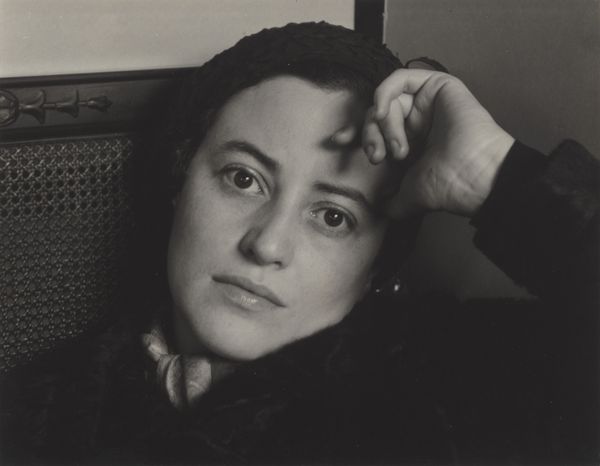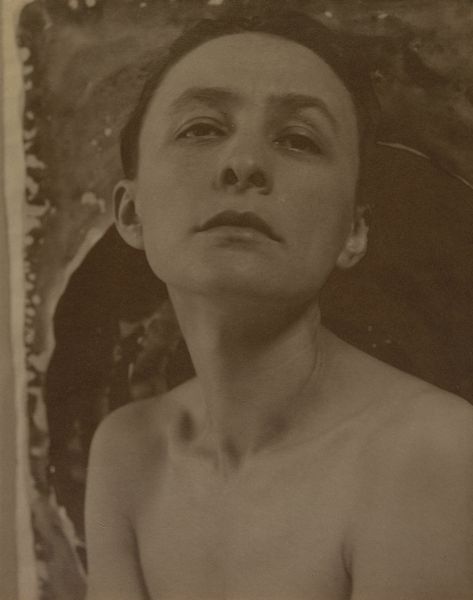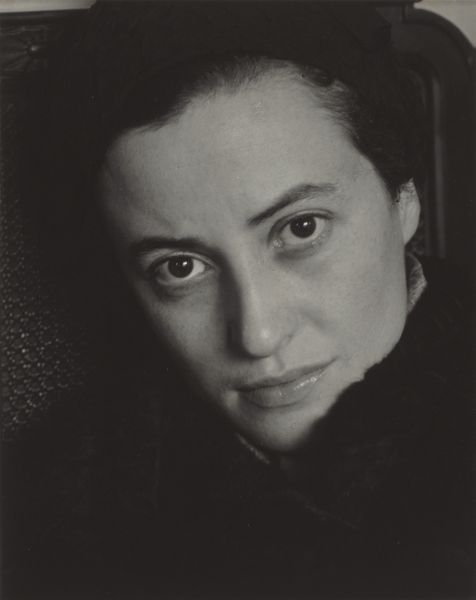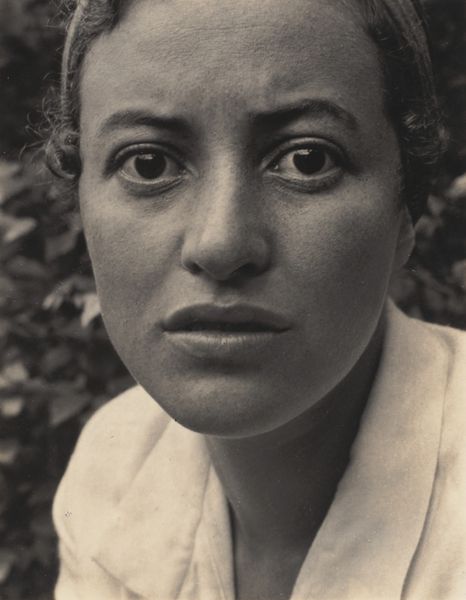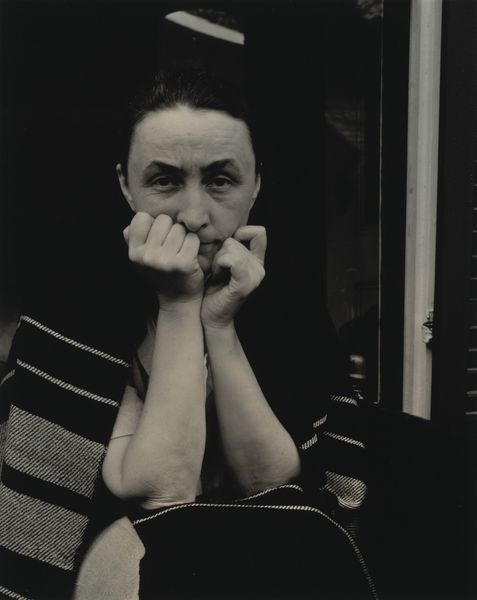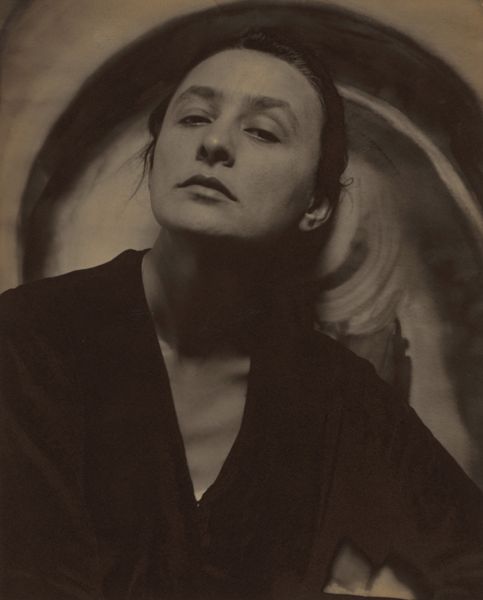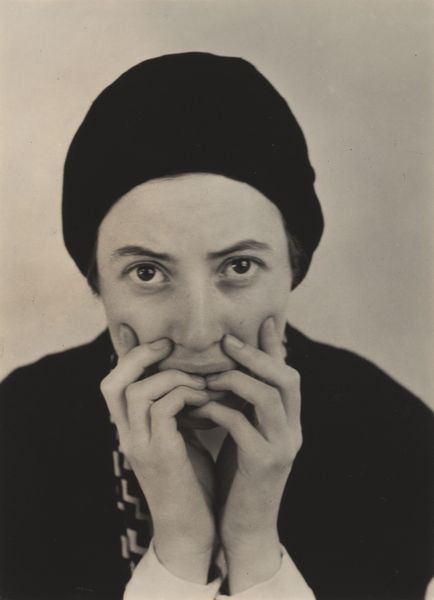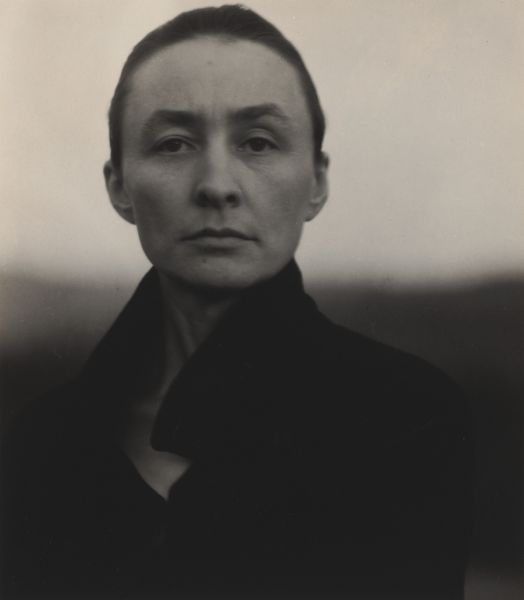
photography
#
portrait
#
self-portrait
#
low key portrait
#
portrait image
#
pictorialism
#
portrait
#
portrait subject
#
black and white format
#
photography
#
portrait reference
#
portrait head and shoulder
#
black and white
#
facial portrait
#
modernism
#
digital portrait
Dimensions: sheet (trimmed to image): 23.8 x 19.3 cm (9 3/8 x 7 5/8 in.) mount: 50 x 37.5 cm (19 11/16 x 14 3/4 in.)
Copyright: National Gallery of Art: CC0 1.0
Editor: Here we have a black and white portrait of Georgia O’Keeffe, photographed by Alfred Stieglitz. The dating is a little vague, somewhere between 1918 and 1937. The photograph has a very intimate feel, maybe even a bit vulnerable. What stands out to you about this image? Curator: Stieglitz’s portraits of O’Keeffe are far more than just photographs; they’re complex documents reflecting the power dynamics of their relationship. How do we unpack the male gaze at play here, especially given Stieglitz’s role in shaping O’Keeffe’s public persona? Think about the period– what was expected from women, as artists and subjects? Editor: So you're saying the photograph can be seen as a constructed image, not just a simple likeness? Curator: Precisely. Pictorialism, which is the style we see in this portrait, aimed to elevate photography to the level of fine art through manipulation of the image. However, whose vision are we truly seeing? Stieglitz, through his framing and artistic choices, arguably projects his own interpretation of O'Keeffe, potentially obscuring her own agency. Consider the placement of her hands - are they protective, vulnerable, or something else entirely? Editor: It’s fascinating to consider that what seems like a straightforward portrait is actually layered with issues of gender, artistic control, and the construction of identity. Curator: Absolutely, and those layers invite us to question not only the image itself but also the broader social and artistic contexts that shaped its creation and reception. It prompts a dialogue about the portrayal of women artists, and the complex interplay of visibility and control. Editor: I’ll definitely look at the portrait differently now, seeing it more as an intersection of personal relationship and social forces, not just a picture of a famous artist. Curator: Exactly! And hopefully this makes you think of whose voices or perspectives might be absent and marginalized, and why that matters.
Comments
No comments
Be the first to comment and join the conversation on the ultimate creative platform.
